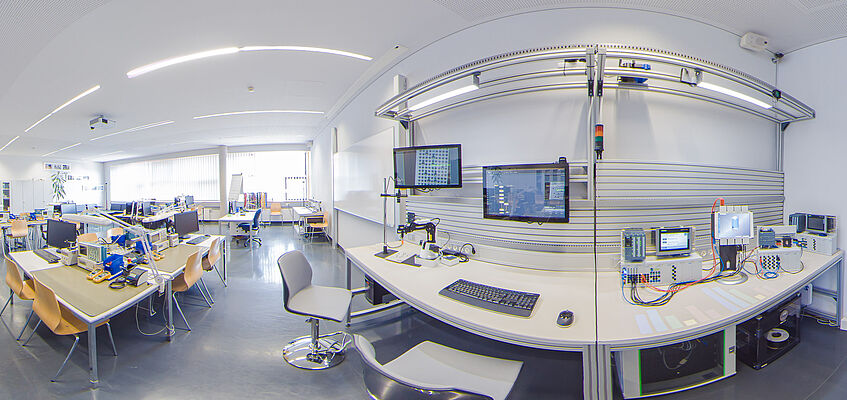Christoph Braun
The development of design guidelines for the virtual mapping of learning and teaching environments, examined using the example of an industry 4.0 experimental environment
Background
In response to the demand for competency development for lecturers and students, which has been generated by the ongoing digital transformation, universities and other educational institutions created many so-called “effectively designed teaching spaces” in recent years. This term refers to thematically adapted and equipped teaching spaces, designed to support a collaborative, active and competence-oriented learning environment. In the field of Industry 4.0, for example, so-called pilot factories, test centres and labs were built to assist in obtaining specialist competencies.
However, recent studies have shown that there are still barriers to using these supportive measures, despite the implementation of various practice rooms for learners in education and training. A survey with 60 participating SMEs (small and medium-sized enterprises) on the benefit of Industry 4.0 test centres demonstrated that these learning spaces are either not known or not used for lack of time.
This suggests a need for supportive measures that take the form of individual learning environments, e.g., a combination of virtual and real rooms with the aim of enabling learners to benefit from support which is as temporally independent as possible and allows them to gain digital competencies.
Project Content
This project seeks to contribute to the development of new media format for “digital learning scenarios”. To this end, a virtual visualisation of learning spaces which already exist in the real world is examined in the context of competence-oriented learning environments. The digital images are presented in the form of virtual tours, which are designed according to didactic and methodological principles. The objective is to assess the potential for supporting learners in acquiring competencies regardless of location and time. This project seeks to offer a solution to the above-mentioned challenges posed by the barriers to using Industry 4.0 teaching rooms by defining design principles for implementing virtual tours. A central question to be addressed in this context is how teaching spaces can be visualised in virtual tours in order to support learners in acquiring competencies without being subject to spatial or temporal restrictions.
The design guidelines will be developed in a participatory, research-based design process. Several iterations and the application of usability engineering methods create a scenario prototype of a virtual teaching space on the topic of Industry 4.0. An important characteristic of the research phase is the integration of learners, teachers and developers throughout the entire design process.
The design guidelines are intended to provide educational institutions with an approach to make their physical learning infrastructure for achieving learning outcomes accessible online as well. Although the design principles are created for the target group of SMEs that experience a demand for digital education and training, they can also be evaluated for other target groups and other thematic areas of application, and thereby analytically generalised.
05/2021

Industry 4.0 Experimental environment © Christoph Braun
